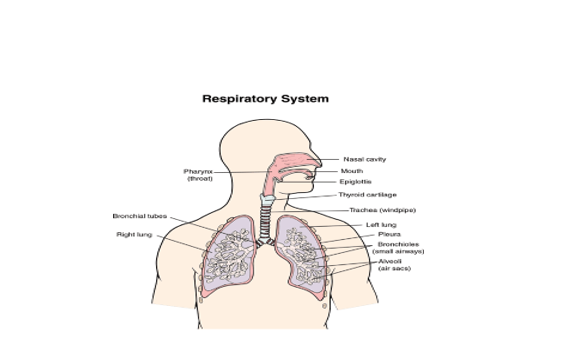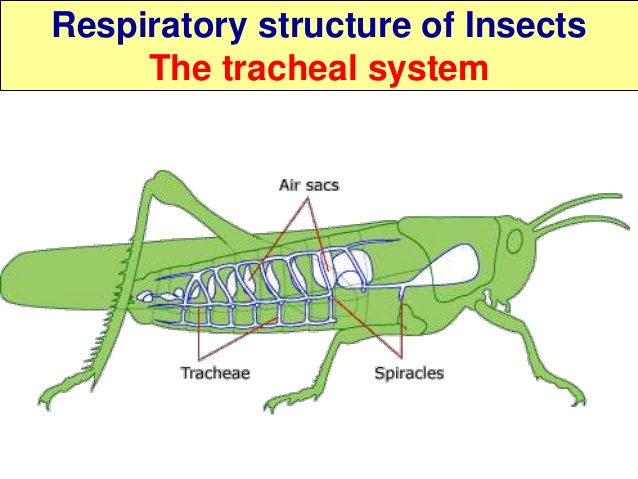Back to: BIOLOGY SS2
Welcome to Class !!
We are eager to have you join us !!
In today’s Biology class, We will be learning about the Respiratory System. We hope you enjoy the class!

DEFINITION/PHASES OF RESPIRATION
The process of respiration involves the taking in of oxygen its transport within the body of the organism, its exchange in the cells and the eventual release of energy in form of ATP, water and carbon(IV)oxide. The energy is utilized by the cells for their daily activities. Respiration can, therefore, be defined as a biochemical activity of the cell in which glucose is broken down in a series of reaction controlled by enzymes to release energy.
The following are the Different Phases of Respiration
- External Respiration (Breathing)
This is the taking in of oxygen (inhalation) into the respiratory organ(e.g. lungs or gills) and breathing out (exhalation) of carbon(IV)oxide and water vapour.
- Internal (Tissue) Respiration
This is the oxidation of food substances within the cells leading to the release of energy, carbon(IV)oxide, and water. This is made possible by the oxygen taken in through the breathing process. This can be represented by the following equation
C6H12O6 +6O6 →6H2O+6C02+Energy (ATP)
CONDITIONS NECESSARY FOR RESPIRATION
For effective exchange of gases to take place, the following conditions must be met:
Respiratory Medium: This refers to the environment from which the organism picks up oxygen e.g. air and water.
Respiratory Organ: This refers to the organ possessed by the organism needed to pick oxygen from the environment and pass out CO2 and water vapour e.g. lungs in mammals and gills in fishes, etc.
Transport Medium: This is needed to transport dissolved oxygen to the various cells of the body which in turn picks up CO2 and other waste products for elimination process e.g. blood in mammals.
Ventilation: This is the movement of air in the direction over the respiratory surface. This ensures the replacement of used oxygen and the elimination of waste products. Increase in the rate of gaseous exchange is facilitated by ventilation mechanism e.g. breathing in human.
Respiratory surface: This refers to the actual surface of the body where gaseous exchange takes place e.g. alveoli in mammals and cell membrane in amoeba
CHARACTERISTICS OF RESPIRATORY SURFACE
The following characteristics must be exhibited by all respiratory surface be it in plant or animals
- The respiratory surface must be moistened because gases diffuse in solution through them.
- It must be permeable to allow gas to pass in and out of them.
- It must be thin-walled to make diffusion easier and faster.
- It must have an adequate supply of transport medium e.g. blood.
- The surface must be large to aid easy diffusion of gases.
- It must be highly vascularized i.e. it must have lots of capillaries or similar network to bring in and take away gases.
TYPES OF RESPIRATORY SYSTEM
These vary from organism to organism depending on their type, complexity, size and habitat in which they can be found. The table below reflects various organisms and respiratory structures related to them
| Organism | Respiratory Structure | |
| 1 | Unicellular organism e.g. Amoeba and paramecium | Body surface |
| 2 | Hydra worm tapeworm | Cell membrane |
| 3 | Earthworm | Wet skin or body surface |
| 4 | Fishes e.g. Tilapia | Gills |
| 5 | Arthropod e.g. insects | Tracheal system |
| 6 | Arachnids e.g. spiders | Lungs books |
| 7 | Tadpoles | Gills |
| 8 | Reptiles e.g. lizards | Lungs |
| 9 | Amphibians e.g. toads | Mouth, skin, and lungs |
| 10 | Mammals | Lungs |
| 11 | Flowering plant | Stomata and lenticels |
MECHANISM OF RESPIRATORY SYSTEM IN LOWER ANIMALS
Unicellular Organism
They require no elaborate respiratory system for they respire through their entire body surface (the cell membrane acts as the respiratory surface) through a simple diffusion process. Oxygen which is highly concentrated in the environment is absorbed in the organism which diffuses into the region with lower concentration.
Insects
Tracheal system is what insects use for respiration. Air passes through a spiracle then enters tracheal trunk which diffuses throughout a complex, branching network of tracheal tubes that subdivides into smaller and smaller diameters and reaches every part of the body. At the end of each tracheal branch, a special cell (the tracheole) provides a thin, moist interface for the exchange of gasses between atmospheric air and a living cell. Oxygen in the tracheal tube first dissolves in the liquid of the tracheole and then diffuses into the cytoplasm of an adjacent cell. At the same time, carbon dioxide, produced as a waste product of cellular respiration, diffuses out of the cell and, eventually, out of the body through the tracheal system.

FISH
The gill is the respiratory organ in the fish. Enclosed in the gill chamber and about three to four in numbers. Each gill is made up of a gill filament (where gaseous exchange takes place) and the gill raker (that prevents food particles from entering the gill chamber) and the gill arch (in which the filaments are built). The gills are concealed by the operculum. The fish initiates breathing by closing the operculum and opening the mouth and lowering the floor of the mouth. Water which contains dissolved oxygen rushes into the mouth of the fish. The fish then closes its mouth and water rushes into the gill chamber and moves across the gill filaments. Oxygen in the water then diffuses into the gill filaments while CO2 diffuses out of the body expelled through the water as the fish opens its operculum.

TOAD
Tadpole: This is a larval toad or frog that hatch from eggs and can only survive in water. Tadpoles have tiny external gill flaps that extract oxygen from water as it passes over them. Tadpoles open their mouths as they swim and take in water. As the mouth closes, muscles transfer the water to the gills. These consist of thin membranes called lamellae, which take oxygen from the water where it enters the bloodstream through the process of diffusion. Tadpoles can also rise to the surface and gulp oxygen from the air. As tadpoles mature the gills are absorbed by the body as other respiratory systems develop.
Adult Toad:
The adult toad respire in three different ways namely: the skin, mouth, and lungs
BUCCAL (MOUTH) GASEOUS EXCHANGE
The toad is able to utilize its mouth as a respiratory organ because of the following:
- It is very large i.e. has a large surface area.
- It has a thin mucus membrane for easy diffusion
- It is well supplied with blood capillaries
To initiate breathing, the toad closes its mouth, the nostrils are opened and the floor of the buccal cavity is lowered, the air is drawn through the nostrils into the buccal cavity. After this, the capillaries and the glottis close and gaseous exchange take place between the blood and the inhaled air. To get rid of the air, the floor of the buccal cavity is raised increasing the air pressure and thereby forcing the nostrils to open and air in the buccal cavity containing carbon dioxide flows out.
SKIN /CUTANEOUS RESPIRATION IN TOAD
This is possible because of the large surface area of the skin. The skin is moist because of continuous secretion form the mucus gland, there is an adequate supply of blood capillaries and finally, the membrane serving as the skin is thin. simple diffusion of gases takes place through it both on land and water.
LUNGS /PULMONARY RESPIRATION IN TOAD
This is similar to what is obtainable in the buccal respiration but with a slight difference. In order to draw air into its mouth, the toad lowers the floor of its mouth, which causes the throat to expand. Then the nostrils open allowing air to enter the enlarged mouth. The nostrils then close and the air in the mouth is forced into the lungs by contraction of the floor of the mouth. To eliminate the carbon dioxide in the lungs the floor of the mouth moves down, drawing the air out of the lungs and into the mouth. Finally, the nostrils are opened and the floor of the mouth moved up pushing the air out of the nostrils.
GENERAL EVALUATION
- Write a short note on cutaneous respiration.
- Differentiate between the cutaneous respiration and pulmonary respiration in toad.
- Explain why toads have a lot of alternatives to respiration.
- Describe the process of gaseous exchange in fish.
- What is diffusion?
We have come to the end of this class. We do hope you enjoyed the class?
Should you have any further question, feel free to ask in the comment section below and trust us to respond as soon as possible.
In our next class, we will continue learning about the Respiratory System in Living Organisms. We are very much eager to meet you there.

this was so helpful, thanks
it’s exactly like the “essential biology textbook”